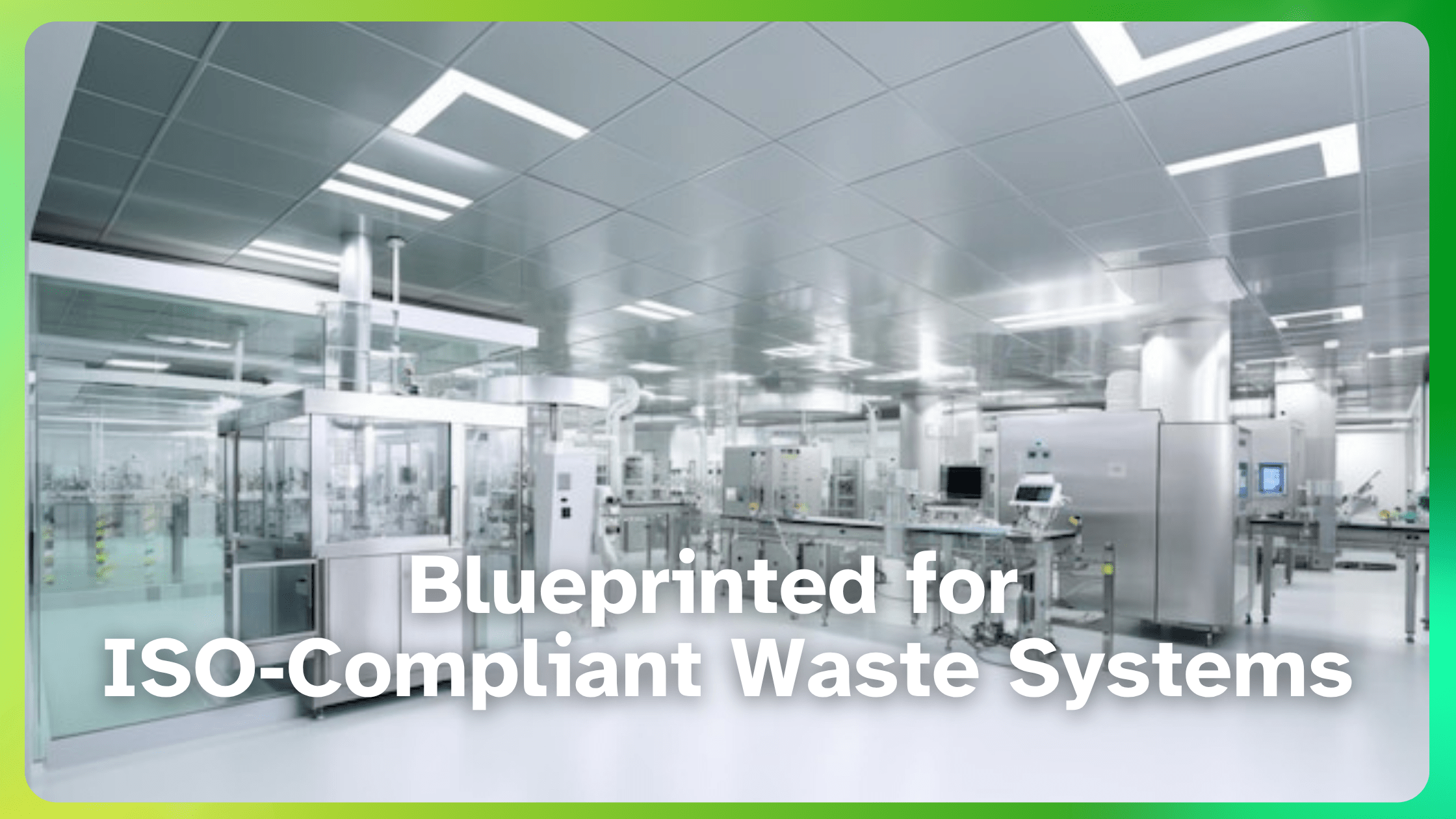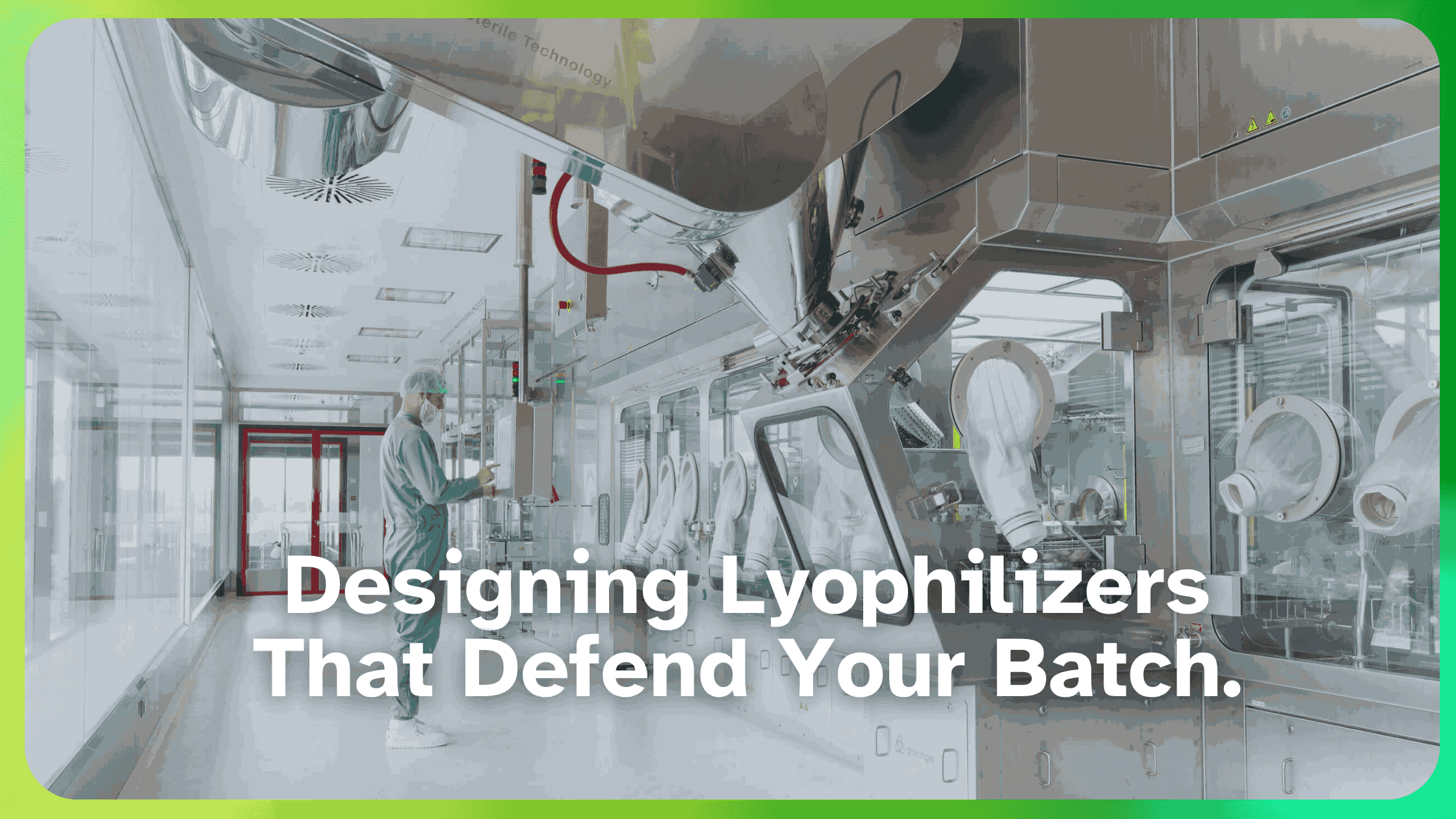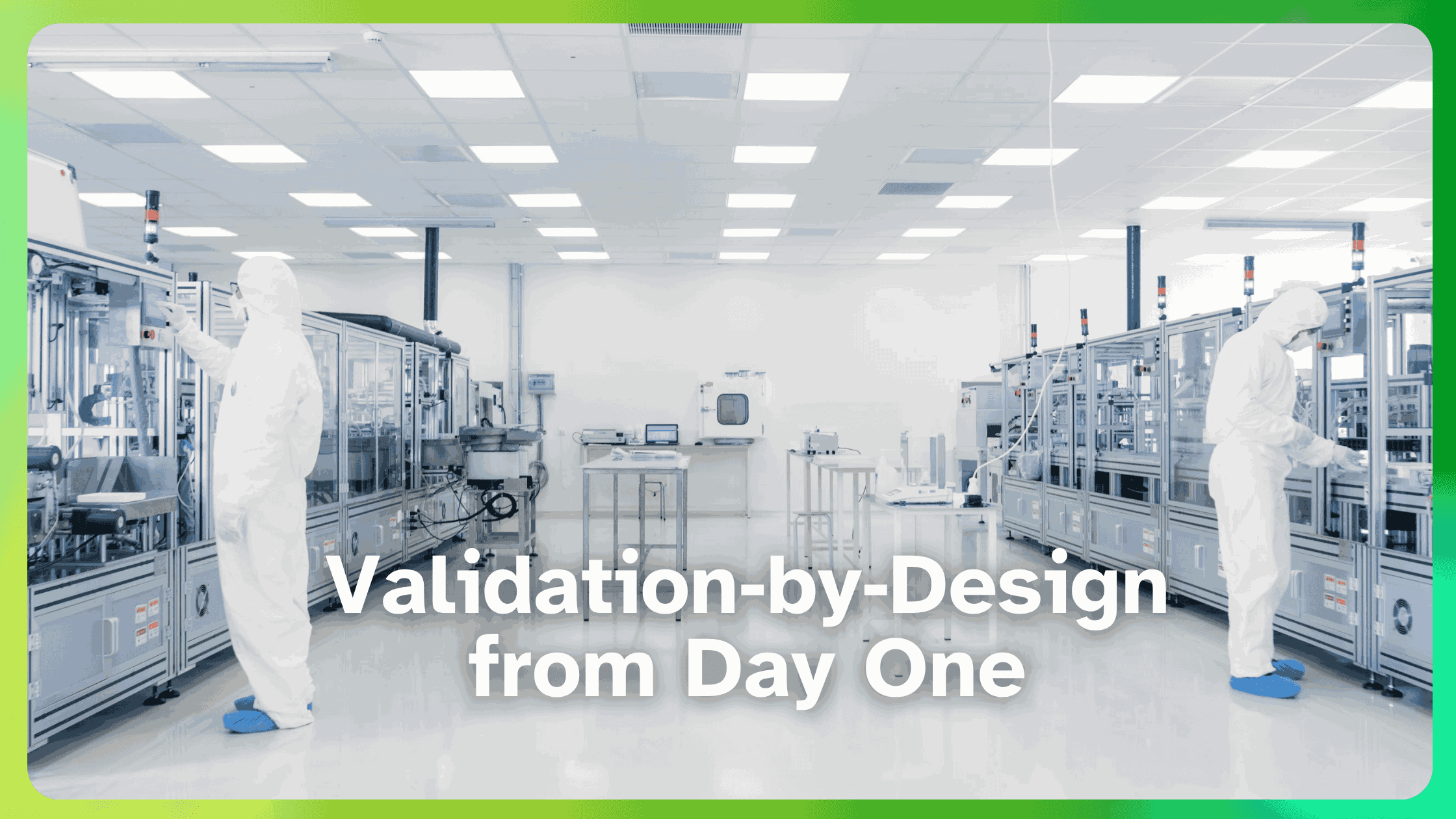Publisher
India Pharma Outlook
published at
April 17, 2025
Facility Expansion in Pharma: Ensuring GMP Certification from Day One
Expanding a pharmaceutical manufacturing facility is a complex process that requires meticulous planning and strict adherence to regulatory standards. Securing GMP certification from the beginning is fundamental to preserving product quality, safeguarding patient well-being, and adhering to global regulatory standards. Planning a facility expansion with regulatory compliance in mind helps companies avoid costly delays, improve workflow efficiency, and reduce compliance risks.
Understanding GMP Certification in Pharmaceutical Manufacturing
Good Manufacturing Practices Certificate is a regulatory requirement designed to ensure that pharmaceutical products are always produced and controlled according to quality standards. It covers all aspects of production, including raw materials, premises, equipment, training, and hygiene of personnel. The goal is to minimize risks involved in production that cannot be eliminated through final product testing alone.
GMP certification helps ensure that medicines are safe, effective, and high-quality by preventing contamination, labeling errors, and other production risks. Regulatory authorities such as the FDA, WHO, EMA, EU GMP, PICS, and MHRA enforce these standards, and companies must meet their requirements to operate legally in global markets.
Strategic Planning for GMP-Compliant Facility Expansion
Expanding a GMP-certified pharmaceutical facility requires a structured approach that aligns with regulatory guidelines. A well-planned facility expansion must align with GMP requirements at every stage—from initial design to full-scale operations. Companies must consider factors such as facility layout, risk management, regulatory requirements, and technology upgrades.
Risk Management and Quality Assurance
Identifying and addressing risks early can help pharmaceutical companies avoid compliance violations during expansion. A structured risk assessment helps identify potential risks associated with GMP design of pharmaceutical facilities, equipment installation, and production processes.
Quality assurance plays a critical role in ensuring GMP certification compliance. Establishing robust quality control measures and implementing a Quality Management System (QMS) ensures that the new facility meets the required standards from the beginning. Regular internal audits, deviation management, and corrective and preventive actions (CAPA) help maintain compliance.
Regulatory Considerations and Compliance
Every facility expansion must adhere to regulatory requirements set by authorities like the FDA, WHO, EU GMP, PICS, and EMA. Compliance involves following the current Good Manufacturing Practices Certificate (cGMP) and ensuring that all changes to the facility are documented and approved.
Before expanding, companies must submit required documents like facility master files and validation reports to regulatory authorities. Engaging with regulatory agencies early in the expansion process helps avoid delays and ensures smooth approval.
GMP Design of Pharmaceutical Facilities Expansion: Key Considerations
An effective facility layout supports compliance by preventing contamination and ensuring efficient workflow. The layout must support efficient workflow, contamination control, and compliance with regulatory standards. Choosing the right location, setting up environmental controls, and designing efficient workflows are key steps in building a GMP-compliant facility that meets regulatory standards.
Site Selection and Design
Selecting an appropriate site for facility expansion is the first step in ensuring GMP certification compliance. The location should meet zoning regulations and be free from environmental risks that could affect product quality. Factors such as proximity to suppliers, accessibility to skilled labor, and logistics infrastructure should also be considered.
A well-planned facility design must incorporate dedicated zones for different production stages to prevent cross-contamination. Modular GMP design of pharmaceutical facilities is becoming increasingly popular, as they allow for scalable expansion while maintaining strict GMP certification standards.
Environmental Controls
Environmental control systems, such as HVAC systems, cleanroom classifications, and air filtration systems, play a crucial role in preventing contamination. WHO Good Manufacturing Practices Certificate guidelines require controlled temperature, humidity, and air pressure to maintain product integrity. Advanced automation technologies, such as real-time environmental monitoring systems, can be integrated to detect deviations and ensure compliance with regulatory standards.
Workflow Optimization
A well-planned facility layout helps keep the workflow smooth and reduces the chances of mistakes or contamination. Separating areas for raw material storage, manufacturing, and packaging makes it easier to avoid mix-ups and cross-contamination. Setting up one-way paths for both materials and workers also improves compliance and lowers the risk of contamination.
For pharmaceutical companies working with potent compounds, containment strategies such as isolators and restricted access barrier systems (RABS) should be considered. Efficient workflow designs also support lean manufacturing principles, helping companies improve productivity while maintaining GMP certification compliance.
Equipment and Technology Integration
Choosing GMP-certified equipment is crucial for ensuring both quality and efficiency. The equipment should meet current regulatory standards and be compatible with automated, data-driven manufacturing processes. Before use, new equipment must go through Installation Qualification (IQ), Operational Qualification (OQ), Design Qualification (DQ), and Performance Qualification (PQ) to confirm compliance.
Equipment Qualification
Equipment validation is an essential step in the facility expansion process. Qualification processes involve GMP design of pharmaceutical facilities, IQ, OQ, DQ, and PQ, ensuring that the equipment consistently performs as expected. Companies must also maintain documentation of equipment validation and calibration activities to demonstrate compliance during audits.
Technology Upgrades
Advanced technologies like automation, digital tracking, and real-time monitoring improve GMP certification compliance by minimizing human errors and increasing process efficiency. Using Manufacturing Execution Systems (MES) allows real-time production tracking and ensures compliance with Good Manufacturing Practices Certificate guidelines. Moreover, AI-driven predictive maintenance systems can help minimize equipment downtime and prevent compliance issues by detecting potential failures before they happen.
Personnel Training and Management
A well-trained workforce is vital for maintaining GMP certification. Employees must understand compliance protocols, operational procedures, and quality control measures.
Training Programs
Comprehensive training programs should be designed to educate employees on Good Manufacturing Practices Certificate principles, SOP adherence, and hygiene standards. Companies should conduct training simulations and hands-on learning sessions to help employees better understand GMP certification compliance. Regular assessments ensure that staff remains competent.
Continuous Education
Ongoing training ensures that employees stay updated with regulatory changes and best practices. Refresher courses, workshops, and external certifications contribute to a culture of continuous improvement. Many companies partner with external regulatory experts to conduct specialized Good Manufacturing Practices Certificate training programs to ensure continuous learning.
Steps to Achieve GMP Certification
Obtaining GMP certification for an expanded facility requires following a structured process that aligns with regulatory expectations. This process ensures that all facility systems, documentation, and operational procedures meet regulatory standards before production begins.
Initial Assessment
A GMP gap analysis is the first step in certification. This involves conducting a thorough assessment of the current facility, identifying areas that require improvement, and ensuring all systems align with GMP guidelines.
A comprehensive audit should include facility design, environmental controls, equipment qualification, quality management systems, and documentation. Addressing these gaps before regulatory inspections ensures a smoother certification process and minimizes risks of non-compliance.
Documentation and SOPs
Comprehensive Standard Operating Procedures (SOPs) and documentation are fundamental for demonstrating compliance. Documentation should cover every aspect of manufacturing, from material sourcing to production, testing, and distribution.
Accurate record-keeping ensures traceability, accountability, and transparency during audits. Companies must establish a document control system to manage SOP updates and revisions efficiently. Additionally, batch records, deviation reports, and change control logs should be maintained systematically to comply with GMP standards.
Quality Control Measures
Implementing quality control measures ensures that all manufacturing processes comply with GMP standards. This includes in-process testing, batch release protocols, stability studies, and validation of analytical methods.
Process validation, cleaning validation, and analytical method validation play a crucial role in demonstrating consistency in product quality. Companies must also implement corrective and preventive action (CAPA) procedures to address deviations and continuously improve operations.
Common Challenges in GMP Certification During Facility Expansion
Regulatory Hurdles
Expanding a facility while ensuring GMP compliance can be challenging due to changing regulatory expectations. Each country has its own set of guidelines, and companies operating across multiple regions must adhere to varying compliance frameworks. Inconsistent regulatory interpretations, evolving standards, and extended approval timelines can lead to delays in facility certification. Engaging experienced regulatory consultants, conducting pre-approval meetings with agencies, and implementing a regulatory intelligence strategy can help navigate these challenges.
Resource Allocation
Expanding a GMP-certified facility requires significant investment in infrastructure, personnel, and technology. Proper budget planning ensures adequate resources for a successful expansion. Financial constraints often lead to project delays, so securing funding early and ensuring capital expenditure is aligned with GMP priorities is essential.
Ensuring Long-Term GMP Compliance Post-Expansion
Once a facility is expanded and GMP-certified, continuous monitoring and adherence to GMP regulations are necessary to maintain compliance. Long-term success depends on stringent audits, employee training, and proactive process improvements. Companies that fail to implement post-expansion compliance measures may face regulatory penalties, production disruptions, or product recalls.
Regular Audits and Inspections
Regular internal and external audits help companies spot compliance issues early and stay aligned with GMP standards. Self-inspections often allow them to fix problems before regulatory checks, while risk-based audits ensure key areas meet evolving regulations. Bringing in third-party auditors also provides an objective review to identify and improve any gaps.
Continuous Improvement Initiatives
A strong continuous improvement plan helps pharmaceutical facilities stay compliant while boosting efficiency. Using methods like Lean Manufacturing, Six Sigma, and Kaizen can cut waste, improve productivity, and ensure regulatory compliance. Staying updated on GMP guidelines and new technology is key, and tools like real-time tracking, predictive analytics, and automated reporting make compliance easier while reducing errors.
Building a Culture of Quality from Day One
Establishing a culture of quality ensures that GMP compliance becomes an integral part of the organization rather than just a regulatory requirement. Leadership plays a critical role in fostering a quality-driven mindset by emphasizing accountability, transparency, and proactive compliance measures. Companies that prioritize quality at every level—from leadership decisions to daily operations—are more likely to maintain GMP compliance and avoid regulatory penalties.
A culture of quality requires the following:
- Strong leadership commitment to quality and compliance, ensuring that quality principles are integrated into all business decisions.
- Employee engagement in GMP-related decision-making, fostering a sense of ownership and responsibility.
- Encouraging open communication on compliance concerns, enabling employees to report potential issues without fear of reprisal.
- Regular training programs to keep staff updated on GMP regulations, new compliance standards, and industry best practices.
- Cross-functional collaboration between quality, regulatory, and production teams to ensure seamless adherence to compliance measures.
Case Studies of Successful GMP-Compliant Facility Expansions
Expanding pharmaceutical manufacturing while ensuring GMP compliance from day one requires strategic facility design, workforce training, process optimization, and regulatory alignment.
Two companies successfully navigated this challenge:
- Genepeutic Bio established Thailand’s first GMP-certified cell and gene therapy facility, setting a benchmark for ATMP manufacturing in the region.
- AGC Biologics expanded its Heidelberg facility, increasing pDNA and mRNA production capacity while maintaining strict GMP standards.
By integrating GMP principles from the initial blueprint, both companies accelerated regulatory approvals and ensured long-term operational efficiency.
Case Study 1: Genepeutic Bio – Thailand’s First GMP-Certified Cell & Gene Therapy Facility
Genepeutic Bio, founded in 2020, set out to establish Thailand’s first GMP-certified manufacturing facility for CAR-T cell therapy. With no established GMP framework for Advanced Therapy Medicinal Products (ATMPs) in Thailand, the company faced a unique challenge—building a compliant facility from the ground up while aligning with both local and global regulatory expectations.
To overcome this, Genepeutic Bio partnered with Cytiva to design a modular GMP-compliant cleanroom facility at Thailand Science Park. The 600m² site incorporated:
- Closed-system manufacturing technologies to minimize contamination risks.
- Single-use bioprocessing platforms to enhance sterility and operational flexibility.
- Environmental monitoring systems to maintain GMP adherence throughout production.
Genepeutic Bio knew that just having the right infrastructure wasn’t enough, so they focused on building a strong GMP culture through intensive workforce training. Employees received hands-on training in SOPs, batch documentation, and quality control to ensure strict compliance.
This approach helped speed up regulatory approvals and established the company as a major player in ATMP manufacturing in Southeast Asia. Plus, by designing their facility with scalability in mind, they made sure future expansions could happen smoothly without risking GMP compliance.
Key Takeaway: Early collaboration with regulatory agencies and industry leaders ensures that facility design and operational workflows align with international GMP standards, reducing compliance risks and enabling long-term growth.
Case Study 2: AGC Biologics – Expanding GMP-Compliant Manufacturing in Heidelberg
AGC Biologics, a leading contract development and manufacturing organization (CDMO), expanded its Heidelberg facility to meet rising global demand for microbial, pDNA, and mRNA production. The challenge was twofold—increasing production capacity while ensuring full GMP compliance for next-generation biopharmaceuticals.
The expansion introduced:
- New Grade B and C cleanrooms optimized for large-scale pDNA and mRNA manufacturing.
- Advanced air-handling and contamination control systems, exceeding EU GMP Annex 1 standards.
- Automated batch tracking and real-time environmental monitoring, reducing human error and ensuring regulatory adherence.
With a growing need for regulatory-compliant storage, AGC Biologics also expanded its temperature-controlled warehouse capacity, ensuring product integrity from raw material handling to final distribution. Digital batch tracking systems streamlined compliance documentation, enhancing efficiency.
AGC Biologics focused on upgrading its infrastructure and automating processes to boost production while staying fully GMP-compliant. This expansion helped the company strengthen its position as a leading CDMO in the pDNA and mRNA sector, meeting the growing demands of the biopharmaceutical industry.
Key Takeaway: Investing in automated, scalable GMP-compliant facilities ensures long-term manufacturing flexibility and regulatory success, allowing CDMOs to meet growing global demands efficiently.
Inotek’s Approach to Ensuring GMP Compliance in Pharma Expansion
Inotek, a leading pharmaceutical project management firm, has developed a structured methodology for ensuring GMP compliance during facility expansions. Their expertise in regulatory planning, facility design, and risk assessment allows pharmaceutical companies to achieve GMP certification with minimal disruptions.
Key Takeaways from Inotek’s Approach:
- Strategic regulatory engagement: Early collaboration with regulators to align facility design with compliance requirements and avoid regulatory bottlenecks.
- Advanced technology integration: Implementing smart automation, AI-driven process monitoring, and cloud-based compliance tracking systems to enhance efficiency and compliance.
- Quality-first mindset: Ensuring that GMP principles are integrated into every phase of facility expansion, from site selection to operational validation.
- Risk-based facility design: Creating modular and scalable facilities that can adapt to changing regulations while minimizing contamination risks.
By following Inotek’s best practices, pharmaceutical companies can streamline facility expansion, ensure compliance, and optimize manufacturing efficiency while staying ahead in a competitive regulatory environment.
FAQs
What are the key requirements for obtaining GMP certification in pharmaceutical facilities?
GMP certification requires adherence to strict quality control measures, including proper facility design, validated equipment, personnel training, risk management, and detailed documentation. Compliance with regulatory guidelines from authorities like the FDA, WHO, EU GMP, PICS, and EMA is essential.
How does the GMP design of pharmaceutical facilities impact regulatory approval?
A well-planned GMP-compliant facility layout minimizes contamination risks, ensures efficient workflow, and meets stringent regulatory standards. Proper environmental controls, validated equipment, and clear operational protocols enhance the likelihood of regulatory approval and faster certification.
What challenges do companies face in maintaining good manufacturing practices certification during expansion?
Companies face challenges such as evolving regulatory requirements, infrastructure upgrades, maintaining compliance during construction, and ensuring continuous product quality. Effective risk management, proactive regulatory engagement, and staff training help overcome these hurdles.
What is the typical timeline for achieving GMP certification in a newly expanded pharma facility?
Achieving GMP certification in a newly expanded pharma facility involves multiple stages, including planning, facility design, equipment validation, staff training, regulatory submissions, audits, and final approval. The overall duration depends on the complexity of the facility and the efficiency of each phase. Early regulatory engagement can help expedite the process by identifying compliance expectations upfront and minimizing delays during audits and approvals.




